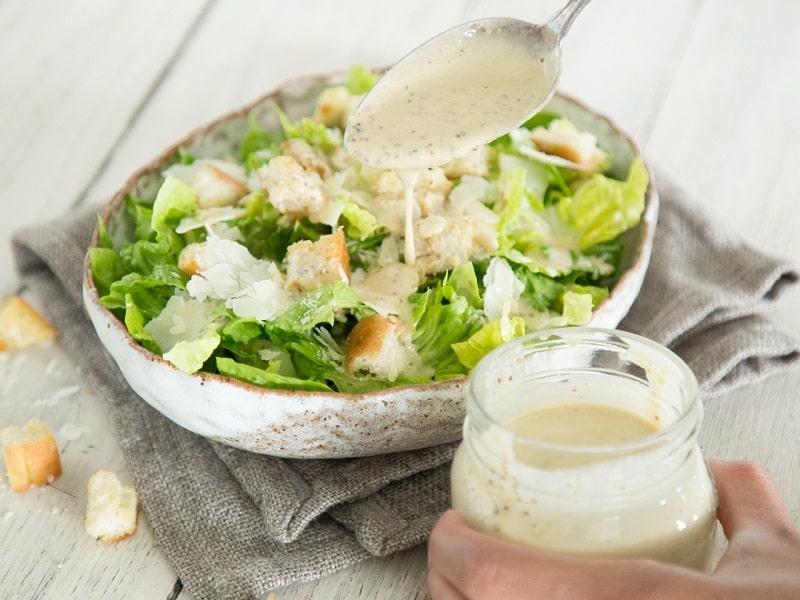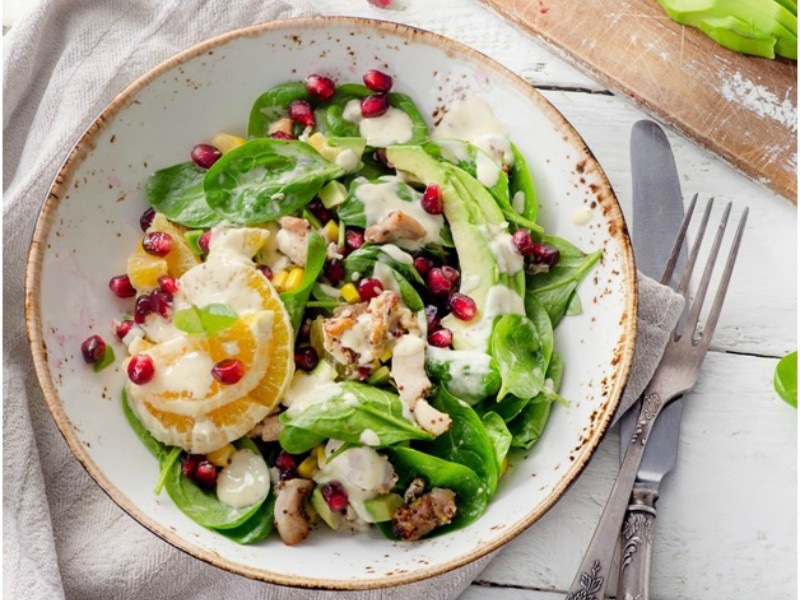Exploring the Wonderful World of Salad Dressings
Introduction:
Salads are not just about leafy greens anymore; they have become a canvas for an array of vibrant flavors and textures. One of the key elements that make salads irresistible is their dressing. Salad dressings come in an impressive variety, each with its own unique combination of ingredients and flavors. In this article, we will explore some of the most popular types of salad dressings, their key ingredients, and the various ways they can elevate your salads to new heights.
1. Vinaigrette Dressings:
Vinaigrette dressings are a classic choice for salads and are usually made with a simple mixture of oil, vinegar, and seasonings. They provide a tangy and refreshing flavor profile that pairs well with a variety of salad ingredients. Some popular variations of vinaigrette dressings include balsamic vinaigrette, red wine vinaigrette, and apple cider vinaigrette.
2. Creamy Dressings:
Creamy dressings offer a rich and smooth texture that adds a decadent touch to salads. These dressings typically incorporate ingredients like mayonnaise, sour cream, or yogurt to create a creamy base. Some well-loved creamy dressings include ranch, blue cheese, Caesar, and thousand island dressings. They are versatile and can complement a wide range of salad ingredients.
3. Citrus-Based Dressings:
Citrus-based dressings utilize the zingy, vibrant flavors of citrus fruits like lemon, lime, or orange. These dressings offer a burst of fresh tanginess that can brighten up any salad. Citrus-based dressings often combine citrus juice with oil, honey, or mustard to balance the flavors. They are particularly refreshing for summer salads and work well with seafood or fruit salads.
4. Asian-Inspired Dressings:
Asian-inspired dressings encompass a wide range of flavors and ingredients, inspired by the cuisines of various Asian countries. These dressings often incorporate soy sauce, sesame oil, ginger, garlic, and other spices to create a unique fusion of flavors. Some popular examples include ginger soy dressing, sesame ginger dressing, or Thai peanut dressing. These dressings can add a distinctive twist to your salads, especially when paired with ingredients such as crispy noodles, tofu, or grilled meats.
5. Herbed Dressings:
Herbed dressings add a delightful freshness to salads by incorporating a variety of herbs. They can be made by blending fresh herbs like basil, cilantro, parsley, or dill with oil, vinegar, or citrus juice. Herbed dressings are ideal for green salads but can also enhance pasta or potato salads. They bring a burst of aromatic flavors that elevate the overall experience.

6. Fruit-Based Dressings:
Fruit-based dressings are a creative way to infuse salads with a touch of natural sweetness. These dressings often feature fruits like berries, peaches, mangoes, or citrus fruits. They can be made by blending or pureeing fruits with ingredients like vinegar, oil, honey, or yogurt. Fruit-based dressings work well with fruit salads or salads that incorporate both sweet and savory elements.
7. Nutty Dressings:
Nutty dressings add a distinct richness and depth of flavor that can take salads to the next level. These dressings commonly use ingredients like various nut butters, crushed nuts, or nut oils. Popular examples of nutty dressings include tahini dressing, almond butter dressing, or walnut vinaigrette. They pair exceptionally well with ingredients like roasted vegetables, grilled chicken, or goat cheese.
Conclusion:
Salad dressings play a pivotal role in enhancing the overall taste and appeal of salads. Whether you prefer a tangy vinaigrette, a creamy indulgence, or an exotic fusion of flavors, the range of options is vast and diverse. Experimenting with different types of dressings can help take your salads from ordinary to extraordinary, ensuring a delightful dining experience every time. So, the next time you prepare a salad, don’t forget to match it with a dressing that perfectly complements your chosen ingredients, to create fantastic and memorable taste sensations.Exploring the Wonderful World of Salad Dressings
I. The Growing Demand for Salad Dressings
Salad dressings have become an integral part of the modern dining experience, with an increasing number of people seeking healthier and tastier options for their meals. As consumers become more conscious about their dietary choices, they are looking for flavorful dressings that can elevate the taste of their salads while still aligning with their health goals. This growing demand presents a significant opportunity for businesses in the food industry to create and market a variety of salad dressings to cater to different preferences and dietary needs.
II. Market Analysis and Trends
The salad dressing market has witnessed steady growth in recent years, driven by factors such as increasing health-consciousness, changing food preferences, and the growing popularity of salads as a meal option. According to a report by Grand View Research, the global salad dressing market is expected to reach $11.1 billion by 2027, with a compound annual growth rate (CAGR) of 4.1% from 2020 to 2027. This indicates a favorable market landscape for businesses operating in this sector.
One of the notable trends in the salad dressing industry is the rise in demand for natural and organic dressings. Consumers are increasingly seeking dressings that are free from artificial additives, preservatives, and high levels of sodium. They want dressings made from high-quality ingredients that not only enhance the taste of their salads but also align with their values of clean eating. Businesses can tap into this trend by offering a range of natural and organic salad dressings that cater to health-conscious consumers.
III. Key Ingredients and Flavor Profiles
Salad dressings can be formulated using a wide range of ingredients, each with its own distinct flavor profile. Some of the key ingredients commonly used in salad dressings are:
1. Oil: Oil serves as the base of many dressings, providing a silky texture and carrying the flavors of other ingredients. Common oils used include olive oil, canola oil, avocado oil, and sesame oil.

2. Vinegar or Citrus Juice: Vinegar or citrus juice acts as an acid component in dressings, providing a tangy and refreshing taste. Popular choices include balsamic vinegar, apple cider vinegar, red wine vinegar, lemon juice, and lime juice.
3. Herbs and Spices: Herbs and spices play a vital role in flavoring dressings, adding depth and complexity. Commonly used herbs and spices include garlic, onion, basil, oregano, parsley, dill, cilantro, cumin, paprika, and black pepper.
4. Dairy or Dairy Alternatives: Creamy dressings often incorporate ingredients like mayonnaise, sour cream, Greek yogurt, or dairy-free alternatives like coconut milk or almond milk. These ingredients lend a rich and indulgent texture to the dressings.
5. Sweeteners: Some dressings may contain sweeteners like honey, maple syrup, agave nectar, or fruit purees. These ingredients balance out the acidity and provide a hint of sweetness.
IV. Meeting Consumer Preferences with Customization Options
In today’s competitive marketplace, businesses can gain a competitive edge by offering customization options for their salad dressings. Consumers have unique flavor preferences, dietary restrictions, and health goals, and they appreciate the ability to personalize their dressing choices. By providing a variety of flavors, ingredient options, and package sizes, businesses can cater to a wider range of consumer preferences while also fostering brand loyalty.
One way to offer customization is by allowing customers to choose their preferred base oil and acid. This can include options like olive oil, avocado oil, or lemon juice, giving customers the freedom to create dressings that align with their specific taste preferences. Additionally, offering alternative sweeteners or sugar-free options can cater to those who are watching their sugar intake.
V. Packaging and Presentation
The packaging and presentation of salad dressings can play a significant role in attracting customers and differentiating products in a crowded market. Eye-catching labels, clear ingredient information, and convenient packaging are essential elements to consider when designing the salad dressing packaging.
Clarity in labeling is crucial, particularly for consumers with specific dietary requirements, such as gluten-free, vegan, or allergen-free options. Clearly indicating the ingredients and nutritional information on the packaging can make it easier for consumers to make informed choices.
Furthermore, packaging formats that encourage portion control and easy pouring, such as squeeze bottles or resealable pouches, can enhance the overall user experience and extend the shelf life of the product. Businesses should also consider eco-friendly packaging options, such as using recyclable materials or incorporating sustainability initiatives into their packaging practices, to align with the growing consumer demand for environmentally friendly products.
VI. Targeting Health-conscious Consumers
In recent years, there has been a growing emphasis on health and wellness, leading to an increasing number of consumers seeking healthier options when it comes to their food choices. This trend presents opportunities for businesses to cater to health-conscious consumers by offering salad dressings that are not only delicious but also meet their dietary needs.
Businesses can develop dressings that are low in fat, sodium, or sugar, or create salad dressings specifically tailored to meet specific dietary requirements, such as gluten-free, vegan, or keto-friendly options. Incorporating superfood ingredients, such as chia seeds, turmeric, or spirulina, can also appeal to health-conscious consumers looking for added nutritional benefits in their salad dressings.

VII. Exploring the Foodservice Sector
While retail sales of salad dressings continue to flourish, the foodservice sector offers another avenue for businesses to expand their reach and tap into a broader customer base. Restaurants, cafes, and other foodservice establishments are increasingly incorporating salads into their menus, creating opportunities for businesses to supply their dressings to these establishments.
Partnering with foodservice providers and offering bulk sizes or convenient packaging options can help businesses establish valuable relationships within the foodservice sector. By offering high-quality dressings and providing reliable support, such as recipe ideas, marketing materials, and prompt delivery, businesses can position themselves as preferred suppliers to foodservice establishments.
VIII. Online and Direct-to-Consumer Strategies
In recent years, the rise of e-commerce has presented businesses with new opportunities to reach consumers directly. Selling salad dressings online allows businesses to connect with customers in regions where physical stores may not be available, expanding their customer base. By creating user-friendly websites, investing in online marketing campaigns, and leveraging social media platforms, businesses can effectively market their dressings and educate consumers about their unique flavors and health benefits.
Direct-to-consumer strategies, such as subscription boxes or personalized dressing kits, can also create a loyal customer base and generate recurring revenue. Offering customers the convenience of regular deliveries or the ability to customize their dressing shipments can enhance the customer experience and build brand loyalty.
IX. Leveraging Cross-promotion and Partnerships
Collaborations and partnerships with other food businesses can be mutually beneficial and help to expand the reach of salad dressings. Partnering with farmers’ markets, local produce suppliers, or other food products that complement salads offers opportunities to cross-promote products and tap into a broader customer base.
Businesses can also collaborate with recipe bloggers, influencers, or nutritionists to create engaging content that showcases the versatility of their salad dressings. Sharing innovative recipes, hosting cooking demonstrations, or sponsoring salad-focused events can increase brand visibility and position the dressings as essential ingredients for creating delicious and healthy salads.
X. Research and Development
Remaining innovative and responsive to evolving consumer preferences is crucial for businesses in the salad dressing industry. Investing in research and development (R&D) enables businesses to stay ahead of market trends, explore new ingredients, and develop exciting flavor combinations.
R&D efforts should focus on experimenting with unique flavors, ingredients, and nutritional enhancements that align with current and emerging dietary trends. Testing new products with focus groups or conducting market research can help businesses gain insights into consumer preferences and identify market gaps that can be filled with new and innovative salad dressings.
Conclusion:
The world of salad dressings offers a multitude of possibilities and opportunities for businesses to create flavorful, healthy, and innovative dressings that resonate with modern consumers. By understanding consumer preferences, customizing offerings, and leveraging various marketing strategies, businesses can carve out a niche in the market and build enduring relationships with consumers who seek delicious, nourishing, and convenient options to elevate their salads. Through continuous innovation and a commitment to quality, businesses can thrive in this growing industry and contribute to the ever-evolving culinary landscape.









